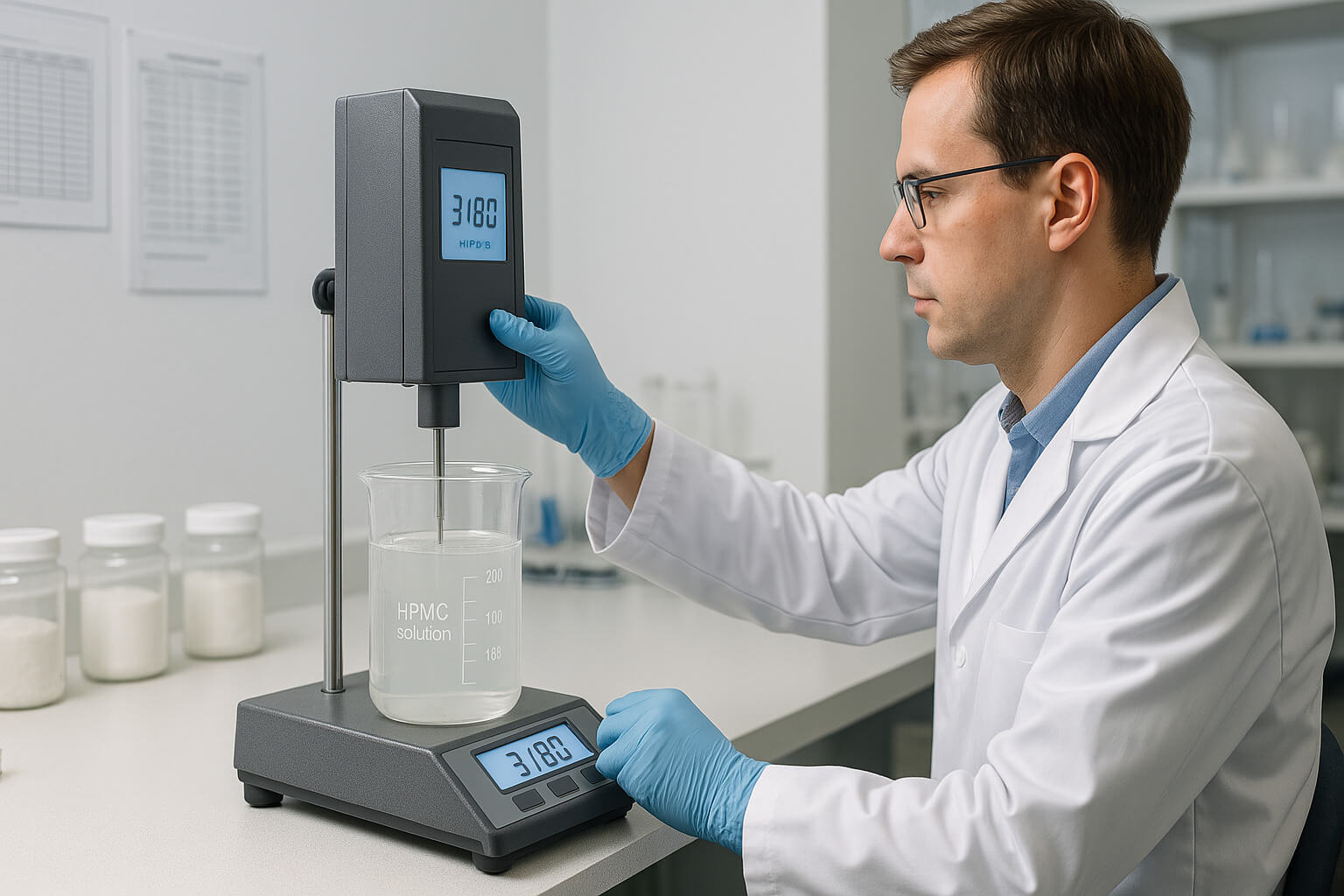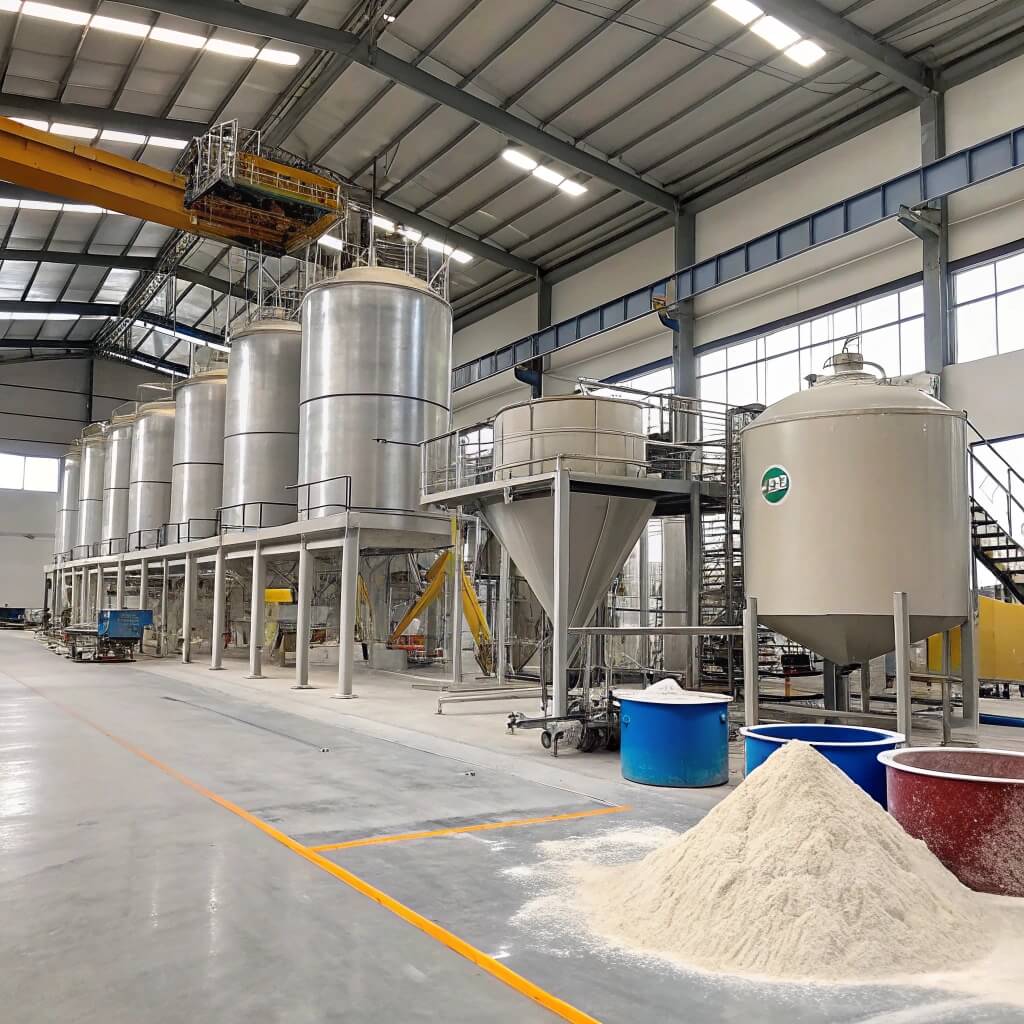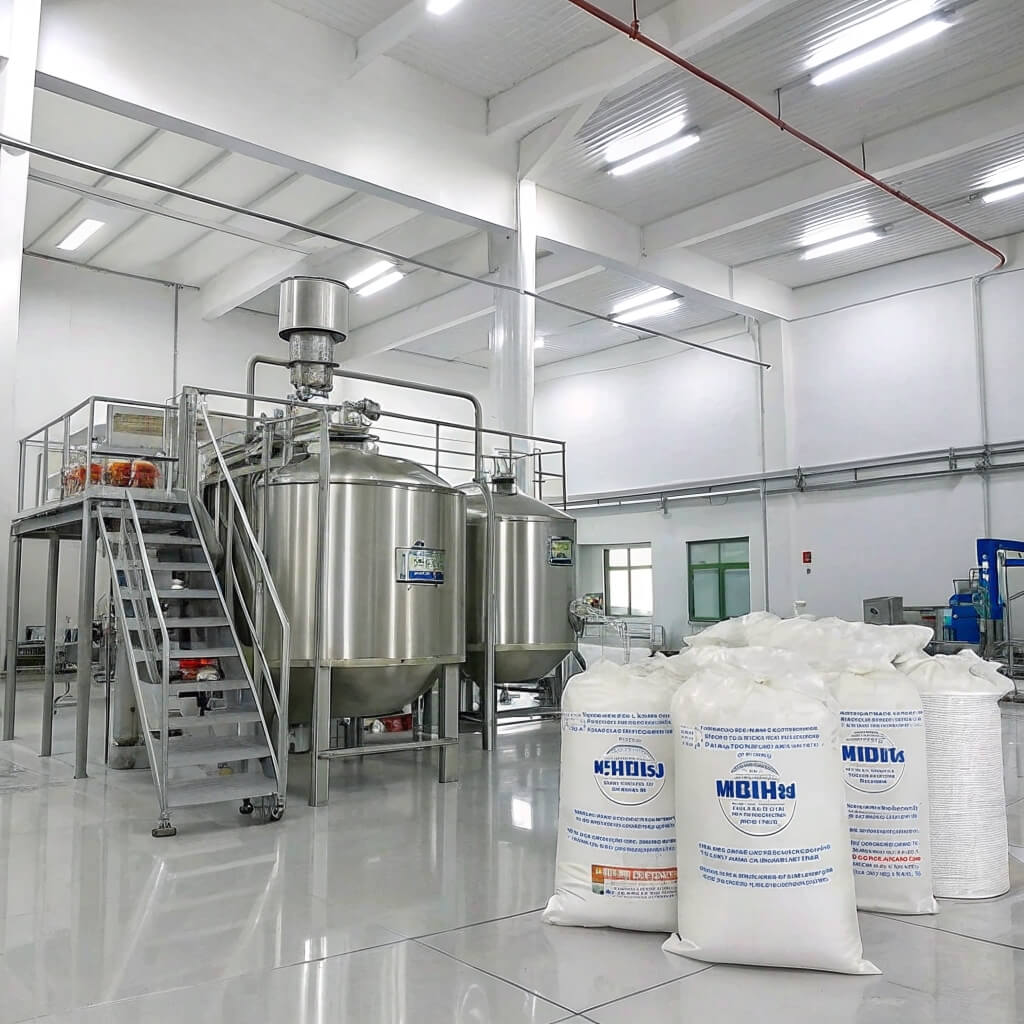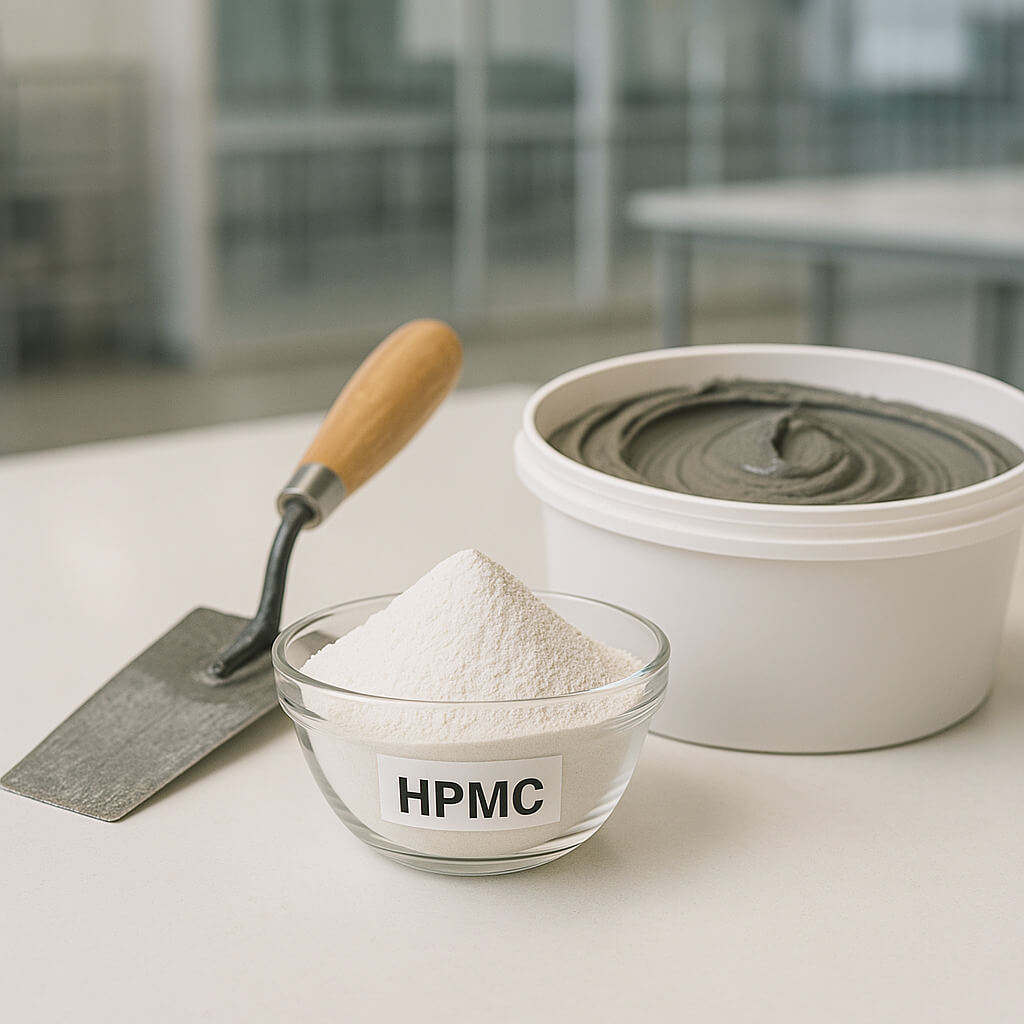Many coating formulators struggle with inconsistent film quality and application issues that lead to customer complaints and production delays.
The viscosity of Hydroxypropyl Methylcellulose (HPMC) directly affects how coatings spread, adhere, and perform on various surfaces. Getting this parameter right transforms problematic coating processes into reliable, high-quality results with less waste and fewer application issues.

Laboratory technician measuring HPMC viscosity for coating applications with specialized equipment showing real-time viscosity readings
Coating quality goes beyond just the raw materials. The way these materials interact and flow during application makes all the difference between success and failure. Our technical team has helped hundreds of customers optimize their coating formulations by focusing on this critical property.
What is the relationship between HPMC viscosity and coating performance?
Coating failures often result from mismatched viscosity profiles that create uneven distribution, sag, or insufficient coverage across surfaces.
When HPMC viscosity aligns properly with application methods and substrate characteristics, coatings apply uniformly and cure to form consistent protective films. This alignment prevents common defects like orange peel texture, edge pulling, and thickness variations.
How viscosity affects film formation and uniformity
Film uniformity starts with how HPMC molecules disperse throughout the coating solution. At our production facility, we've observed firsthand that viscosity control begins with particle size distribution during manufacturing. Unlike cheaper alternatives with inconsistent mesh sizes, our controlled grinding process creates uniform particles that hydrate evenly.
The molecular weight distribution of HPMC directly influences solution viscosity, which then dictates film-forming behavior. Higher viscosity grades (above 100,000 mPa·s) create thicker solution layers during application, resulting in more substantial dried films. Lower viscosity grades (below 15,000 mPa·s) form thinner films but provide enhanced flow properties for spray applications.
Through our manufacturing process, we control substitution levels precisely which affects chain flexibility. This control mechanism allows formulators to predict coating behavior under various application conditions. Our quality control lab tests every batch for اتساق اللزوجة using standardized methods that match industry requirements.
Many coating failures we've diagnosed trace back to inconsistent viscosity between production batches. This variability leads to unpredictable application properties and unreliable final performance, which explains why viscosity stability remains one of our primary quality control parameters.
How does HPMC viscosity influence sprayability and surface coverage?
Low-viscosity spray applications often fail from excessive runoff while high-viscosity solutions clog equipment and create uneven patterns.
The optimal viscosity range allows HPMC coating solutions to atomize properly during spraying while maintaining sufficient surface tension to prevent excessive dripping or sagging after application. Finding this balance ensures maximum coverage with minimal material waste.
For spray applications, viscosity plays a decisive role in determining:
- Droplet size formation during atomization
- Spray pattern uniformity across the target surface
- Material transfer efficiency from equipment to substrate
- Flow behavior after impact on the substrate surface
- Coalescence properties as droplets merge to form continuous films
- Resistance to sagging or running on vertical surfaces
- Leveling characteristics that eliminate spray texture marks
When developing coating formulations, we start with viscosity profiling across different shear rates to predict behavior in spray systems. Lower viscosity grades (typically 5-15,000 mPa·s) work best for conventional spray equipment, while higher viscosity materials require specialized airless systems or pressure modifications.
Surface tension modification through viscosity adjustment has proven particularly important for difficult substrates. In one case study, a customer struggled with coating metal components that had complex geometries. By adjusting to a medium viscosity HPMC grade with specific substitution patterns, we improved their edge coverage by 32% while maintaining spray equipment functionality.
According to research published in coating technology journals, the relationship between viscosity and spray performance follows predictable patterns based on equipment specifications and material properties. Our laboratory regularly conducts spray pattern analysis to help customers select the optimal HPMC grade for their specific application equipment.
Why is viscosity stability essential during formulation and storage?
Viscosity fluctuations during storage create production headaches, causing rejected batches and unexpected equipment adjustments that waste time and materials.
A coating solution with stable viscosity maintains consistent application properties throughout its shelf life, ensuring reliable performance from manufacturing through final use. This stability prevents processing issues and quality deviations.
Before discussing specific stabilization techniques, let's examine the primary factors affecting HPMC viscosity stability:
| عامل | Impact on Stability | Recommended Control Method |
|---|---|---|
| Temperature fluctuation | 15-25% viscosity change per 10°C | Climate-controlled storage; temperature-compensated QC testing |
| pH variations | Significant impact at pH <4 or >9 | Buffer systems; pH monitoring during formulation |
| Electrolyte concentration | Can reduce viscosity by up to 40% | Control water quality; standardize mineral content |
| Enzymatic degradation | Progressive viscosity loss over time | Heat treatment during production; preservative systems |
| Oxidative degradation | Chain scission leading to viscosity reduction | Antioxidant addition; nitrogen blanketing during storage |
Long-term viscosity stability indicators
Our production team monitors several key indicators to predict long-term viscosity stability in HPMC batches. We've found that molecular weight distribution consistency serves as the primary predictor of stability during storage. Narrow distributions typically result in more predictable aging characteristics.
The degree of substitution homogeneity also plays a crucial role in long-term stability. Through careful reaction control during manufacturing, we achieve consistent methoxyl and hydroxypropyl content distribution throughout the polymer chains. This uniformity prevents preferential degradation of certain chain segments that could lead to viscosity drift.
Our quality control protocols include accelerated aging tests where samples undergo temperature cycling to simulate long-term storage. These tests have revealed that HPMC batches with initial viscosity variations greater than ±5% frequently show amplified instability during storage. For this reason, we maintain strict ±3% batch-to-batch viscosity consistency.
Storage stability has been extensively studied by pharmaceutical regulatory agencies given شركة HPMC's critical role in drug delivery systems. Our manufacturing process incorporates insights from these studies to produce grades with exceptional stability profiles that benefit coating applications.
What are the practical benefits of choosing the right HPMC viscosity grade?
Mismatched viscosity grades lead to wasted material, excessive energy consumption, and formulation rework that impact production timelines and profitability.
Selecting the optimal HPMC viscosity grade reduces manufacturing costs through improved process efficiency, faster application cycles, and reduced material consumption while maintaining or enhancing coating performance.
From our experience supporting coating manufacturers, the practical benefits manifest in several operational areas. First, production throughput increases significantly when the viscosity profile matches application equipment. With properly selected viscosity grades, our customers report spray application speed improvements of 15-30% due to reduced clogging and more consistent flow rates.
Material consumption efficiency also improves noticeably. The right viscosity grade allows for thinner effective coating layers without compromising performance, reducing raw material usage by up to 20% in some applications. This translates directly to cost savings while maintaining coverage requirements.
Equipment maintenance frequency decreases substantially when viscosity is optimized. Many customers previously struggled with frequent spray nozzle cleaning or replacement due to inappropriate viscosity profiles. After switching to properly matched HPMC grades, some reported maintenance requirement reductions of 40-60%.
Quality control rejection rates often decrease dramatically with consistent viscosity. One architectural coating manufacturer we supply reduced their batch rejection rate from 8.2% to less than 1.5% after implementing our viscosity-optimized HPMC grade. According to industry quality standards, such improvements represent significant operational value.
Energy consumption during mixing and application also decreases with optimized viscosity. Lower-than-necessary viscosity grades require less energy to pump, spray, and process. One industrial customer measured a 22% reduction in pumping energy requirements after switching to our recommended HPMC viscosity grade.
How does viscosity impact coating adhesion and leveling properties?
Poor adhesion and uneven surfaces result from viscosity profiles that don't balance initial stick with proper flow, creating coatings that peel prematurely or show visible application marks.
Properly controlled HPMC viscosity creates an optimal balance between immediate surface wetting, proper leveling after application, and strong interfacial bonding during film formation and curing.
The relationship between viscosity and substrate adhesion
Substrate adhesion occurs through several mechanisms directly influenced by viscosity characteristics. Through our testing program, we've documented how medium-viscosity grades (25,000-50,000 mPa·s) often provide the optimal balance of initial surface wetting and subsequent polymer entanglement for maximum adhesion strength.
At the molecular level, HPMC chains must have sufficient mobility to penetrate substrate surface irregularities. This mobility correlates directly with solution viscosity, with extremely high viscosity grades sometimes showing reduced adhesion due to limited molecular movement during the critical initial contact phase.
Our production engineers have observed that adhesion testing results often correlate with the thixotropic properties of different HPMC grades. Polymers with stronger thixotropic recovery (regaining viscosity after shear stress removal) typically develop stronger adhesive bonds as they restructure at the interface between coating and substrate.
We manufacture grades specifically optimized for adhesion to challenging surfaces like glass and metals. These grades maintain precise viscosity profiles under the application conditions typical for these substrates. Our internal testing has demonstrated adhesion improvements of up to 35% compared to standard grades when applied to smooth, non-porous surfaces.
For porous substrates like concrete or wood, penetration depth affects both initial adhesion and long-term durability. We've found that tailoring viscosity and molecular weight distribution allows for controlled penetration, balancing surface coverage with internal reinforcement. This approach prevents the common issues of excessive penetration (leading to surface starvation) or insufficient penetration (resulting in delamination under stress).
The leveling behavior after application directly correlates with the relationship between viscosity and surface tension. Our laboratory uses advanced rheometry techniques to identify the optimal viscoelastic properties for each application method. This testing ensures coatings will self-level sufficiently to eliminate application marks without excessive flow that could compromise edge definition or thickness uniformity.
What factors should guide HPMC grade selection for coating applications?
Many formulators choose HPMC grades based primarily on price or availability, ignoring critical application factors that lead to performance failures and customer complaints.
Effective HPMC selection requires systematic evaluation of application method, substrate characteristics, environmental exposure conditions, and specific performance requirements to identify the optimal viscosity profile.
In our technical assistance program, we guide customers through a structured decision process that analyzes several key variables. Application equipment specifications represent the first critical factor. High-pressure airless sprayers can accommodate higher viscosity grades (up to 80,000 mPa·s) while conventional low-pressure systems require lower viscosity materials (typically below 20,000 mPa·s).
Substrate porosity and surface energy significantly influence optimal viscosity selection. Non-porous substrates with low surface energy (like some plastics) benefit from lower viscosity grades that maximize initial wetting. In contrast, highly absorbent substrates often require higher viscosity formulations to prevent excessive penetration and ensure adequate surface film formation.
Environmental exposure considerations should drive viscosity profile requirements. Coatings exposed to moisture, temperature extremes, or chemical contact often benefit from specific methoxyl/hydroxypropyl ratios that affect water retention and redispersibility. Our technical team works with customers to match HPMC properties to environmental requirements for maximum durability.
Production cycle time constraints can limit viscosity options. Fast-drying systems typically benefit from lower viscosity grades that form films more rapidly, while applications requiring longer open times for flow and leveling may necessitate higher viscosity or specialized dissolution profiles.
Compatibility with other formula components remains critical for successful implementation. Through years of testing, we've documented how HPMC interacts with common coating additives including surfactants, pigments, and functional fillers. These interactions can significantly modify viscosity behavior in ways not predicted by simple solution measurements.
After analyzing these factors, we typically provide customers with multiple samples for comparative testing. This approach has proven more effective than theoretical selection alone, as small formulation variations can sometimes create unexpected viscosity effects that only become apparent during actual testing.
الأسئلة الشائعة
What is the role of HPMC in coating?
HPMC serves multiple functions in coating formulations including viscosity control, film formation, adhesion promotion, and barrier properties. Its primary role involves creating proper rheology for application while forming a continuous polymer network during drying. This network provides mechanical strength and substrate adhesion while controlling moisture transmission and chemical resistance properties of the final coating.
ما هي لزوجة محلول HPMC؟
HPMC solutions exhibit viscosities ranging from 3 to over 200,000 mPa·s depending on grade, concentration, temperature, and dissolution conditions. Typical coating applications use HPMC grades providing 5,000-75,000 mPa·s at 2% concentration. Viscosity decreases with increasing temperature (approximately 5-7% per °C) and varies with pH, with stability typically highest in the pH range of 6-8.
What are the critical material attributes of HPMC?
Critical material attributes for HPMC include molecular weight distribution, substitution type and degree, particle size distribution, and purity profile. The methoxyl and hydroxypropyl content percentages determine water solubility and interaction with other ingredients. Particle size affects dissolution rate and lump formation tendency, while purity impacts clarity, color stability, and compatibility with sensitive formulations.
How does temperature affect HPMC?
Temperature significantly impacts HPMC behavior through several mechanisms. Most HPMC grades exhibit inverse solubility, forming gels at elevated temperatures (typically 65-85°C depending on substitution). Solution viscosity decreases approximately 5-7% for each 1°C temperature increase within normal application ranges. During production, we monitor thermal history closely as high-temperature exposure can permanently reduce molecular weight through chain scission, affecting final viscosity profiles.
خاتمة
HPMC viscosity serves as the cornerstone of coating performance, influencing everything from application ease to final film properties. Through precise viscosity control, formulators can optimize spray patterns, improve substrate adhesion, enhance leveling, and extend shelf stability.
Our production team continues to refine viscosity control mechanisms through advanced polymerization techniques and particle engineering. These improvements translate directly to more consistent coating performance across production batches and application conditions.
For coating manufacturers seeking to eliminate application issues while improving final film properties, selecting the appropriate HPMC viscosity grade represents the most impactful formulation decision. Contact Morton for a personalized HPMC grade recommendation based on your specific coating application requirements and equipment specifications.




